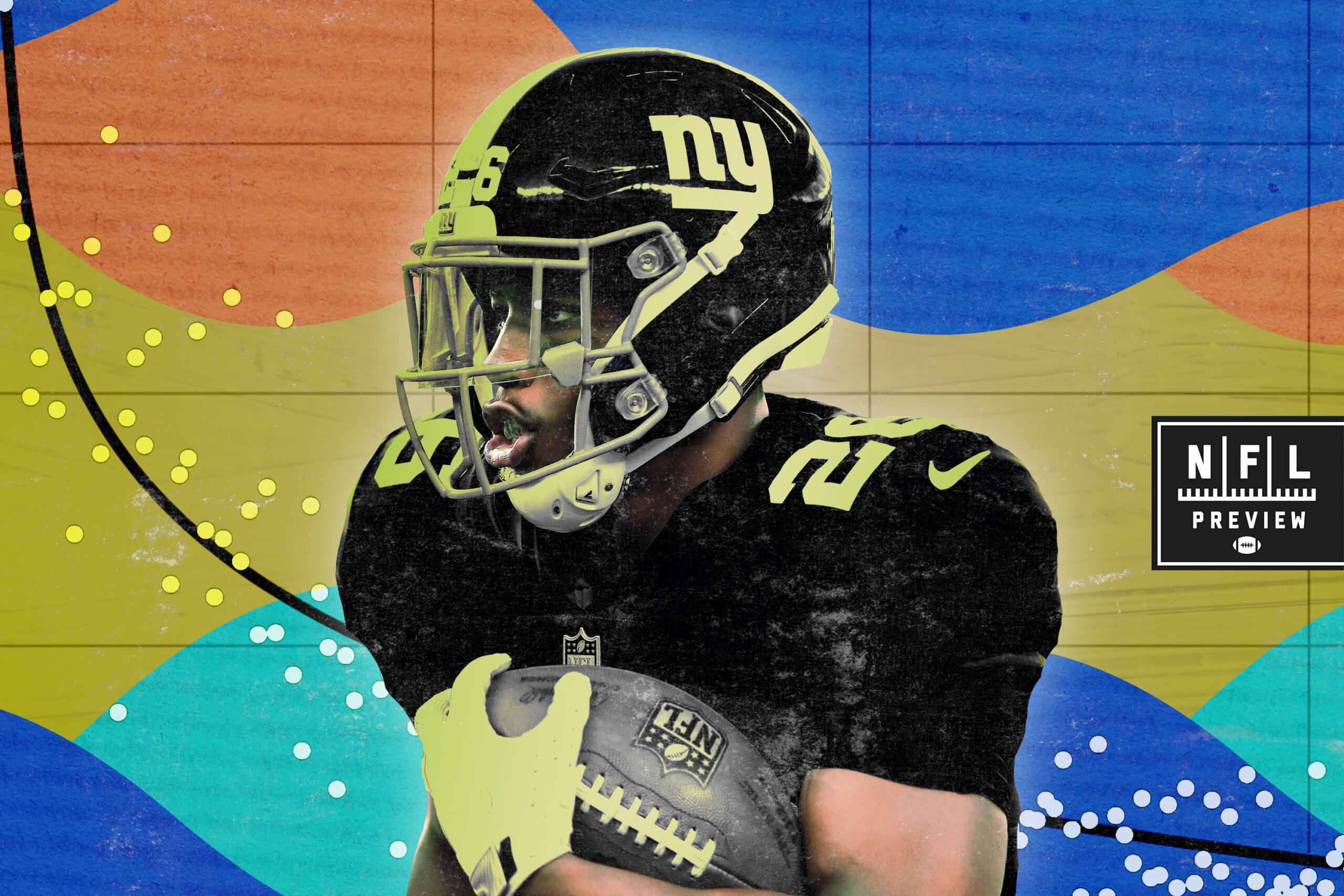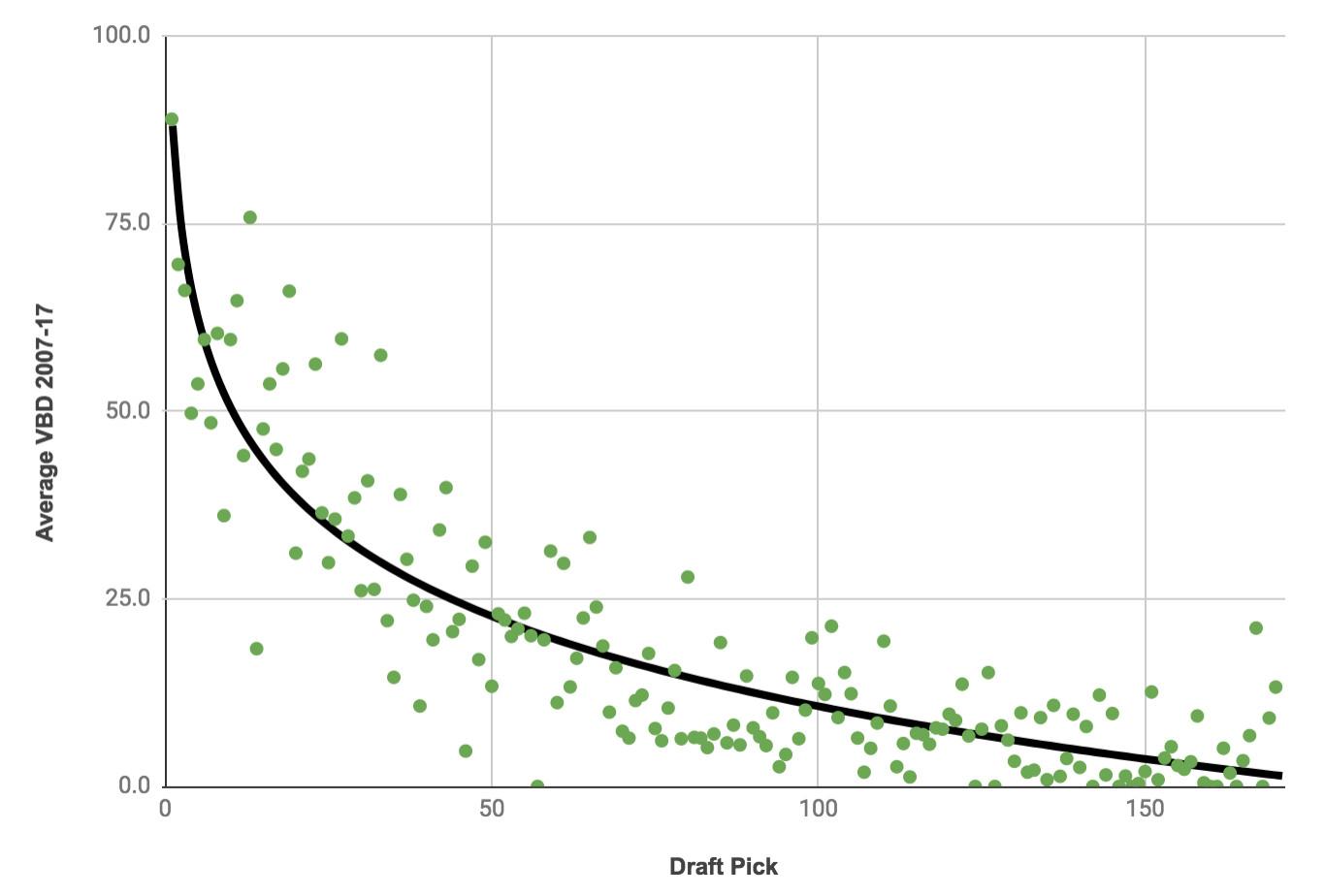
What’s valuable in the NFL? A great quarterback? Always—unless you’re the Eagles and can win with a backup. A great running back? Not usually—unless you’re the Rams and have Todd Gurley. A treasure chest of future second-round picks? Now you’re speaking Bill Belichick’s language. Welcome to Value Week, when we’ll be looking at what moves the needle for NFL teams—and what doesn’t.
“Trying to trade up for a fifth-rounder. I can offer my fifth and a ninth.”
That was a text I got last August from a fellow team owner in my fantasy football league. It’s a keeper league with a snake draft, so teams are able to trade both players and draft picks, and with the draft scheduled for later that night, there was a flurry of texts flying around as people tried to make moves. But I was frozen. My fifth-rounder was pick no. 44, and his was no. 50. Was it worth moving back six spots just to pick up an extra ninth-rounder?
In our league, the fifth round holds extra value because teams can keep up to four players per year, but each keeper costs the team a draft pick in rounds one through four. So there was a chance that a really good player—maybe a rookie, or a star who wouldn’t fit on another team’s roster—would be sitting there for me at pick 44. I told the team owner that I would stand pat for now.
“Fair enough,” he replied. “What about a seventh?”
For a seventh, I wouldn’t have hesitated. But, unfortunately for him, I had set my phone down and didn’t see the text. A full 15 minutes passed, and then he sent another offer:
“OK. I’m prepared to offer you picks 50 and 51 for pick 44.”
This text I did see—and my heart jumped. Picking up the 51st pick as well just to move back six spots? It was a no-brainer … but I couldn’t let on how excited I was.
“OK, I’ll do that,” I sent back, nonchalantly.
It was obviously an overpay on the part of my fantasy colleague, but he was willing to do it to get into position for a high-potential player. The entire interaction is emblematic of a conundrum that affects thousands of fantasy players in keeper, dynasty, and some traditional leagues: No one has any clue how to value draft picks. It’s time for that to change.
In the 1990s, Cowboys head coach Jimmy Johnson wanted to quantify the value of NFL draft selections. He created a draft value chart that has stood the test of time, though sports analysts have attempted to improve on his values over the years, from the Harvard Sports Analysis Collective’s value chart to Football Perspective’s value calculator. Both of those use similar methods, averaging the career value of players selected with certain picks to try to find the expected value of each pick. So I tried to do the same thing for fantasy football.
To determine the fantasy value of each player, I used Pro Football Reference’s “VBD.” VBD measures a player’s contributions against a baseline player—in PFR’s case, that’s the 12th-ranked quarterback in fantasy points, 24th running back, 30th wide receiver, or 12th tight end. VBD essentially shows how much better a player was than the last starting-level player at his position.
So how much VBD does each spot in the draft net, on average? To find out, I recorded the VBD of each player drafted from 2007 to 2017, averaged the value for each draft slot, and charted that against each player’s average draft position on Fantasy Football Calculator, which has data that goes back to 2007. Then I added a logarithmic trend line to smooth out the data and find a consistent expected value for each selection. The end result looks like this:

And here’s the full table of values along that trend line:
Pick Values
That table goes through the first 180 picks, which is equal to a 12-team, 15-round draft. If you need to trade a pick that’s after the first 180 … well … join a different fantasy league.
There are some conclusions to be drawn from this analysis. First, the average value of the first overall pick is far and away higher than any other pick. This makes logical sense—sure, some years the top pick might be someone like David Johnson, who got injured in Week 1 last season, but historically that pick is more likely to perform near the level of LaDainian Tomlinson, who tore up the league in the mid-aughts and was often at the top of the draft board. If you have the first overall pick, hold on to it.
We can also look at which draft position is best. It’s a question that comes up often in fantasy circles: Is it better to pick first, but then have to wait for the draft to snake back around? Or is there more value to having a later pick in the first round, and earlier picks in even-number rounds?
This analysis indicates that the earlier you draft, the better. Through 15 rounds, the top position in a 12-team draft has a total of 289.2 in value, while the last position has 252.6. It’s a steady decline throughout, though the differences become less dramatic the further you get away from the top overall position. The same is true for a 10-team draft, where the top drafter has 333.0 points of value and the 10th-place team gets 299.3.
To put that in context, let’s return to the trade I made last year. We already knew that I got a good deal—now we can quantify it. From looking at the chart, we can see that by the fifth round, value starts to flatten out—so much so that it turns out the 44th pick is barely worth more than the 50th selection. In trading no. 44 for nos. 50 and 51, I gained 20.2 points of value, basically the equivalent of the 58th overall pick. Even a ninth-rounder would have represented an overpay. Had I traded no. 44 for nos. 50 and 90, I’d have gained 10.3 points of value—essentially equal to the 103rd pick. Moving back six spots in the fifth round simply doesn’t have much of an impact on the level of player available, so nearly any extra pick I could get to do that makes this deal worth it.
This actually brought up a conundrum for me: If I’d had this chart last year, I’d have accepted that first trade, for no. 50 and a ninth-rounder. Which actually means that not having this chart last year benefitted me.
Of course, the way my league is set up, a fifth-rounder is generally worth more than it is in a typical draft, which brings up an important point to highlight: Just like with the NFL draft, a chart of values can only ever serve as a rough guideline. It may not make sense to simply pull a Bill Belichick and trade back constantly, even if this chart indicates you’d be gaining value by doing so—there are only so many starting spots on a fantasy roster. It also may not make sense to put together a mega package for the top overall pick because, though the value may theoretically be there, you’d be taking a massive risk in putting all your eggs in one basket that this chart can’t capture.
But does it make sense to pick up an additional late-rounder just to move back six spots? It does. Hell, it’s an even better deal than I thought it was a year ago. So, as I head into my draft this year armed with this chart, I know I won’t be flying so blind again. And if someone offers me an extra pick to move back, I won’t hesitate.


